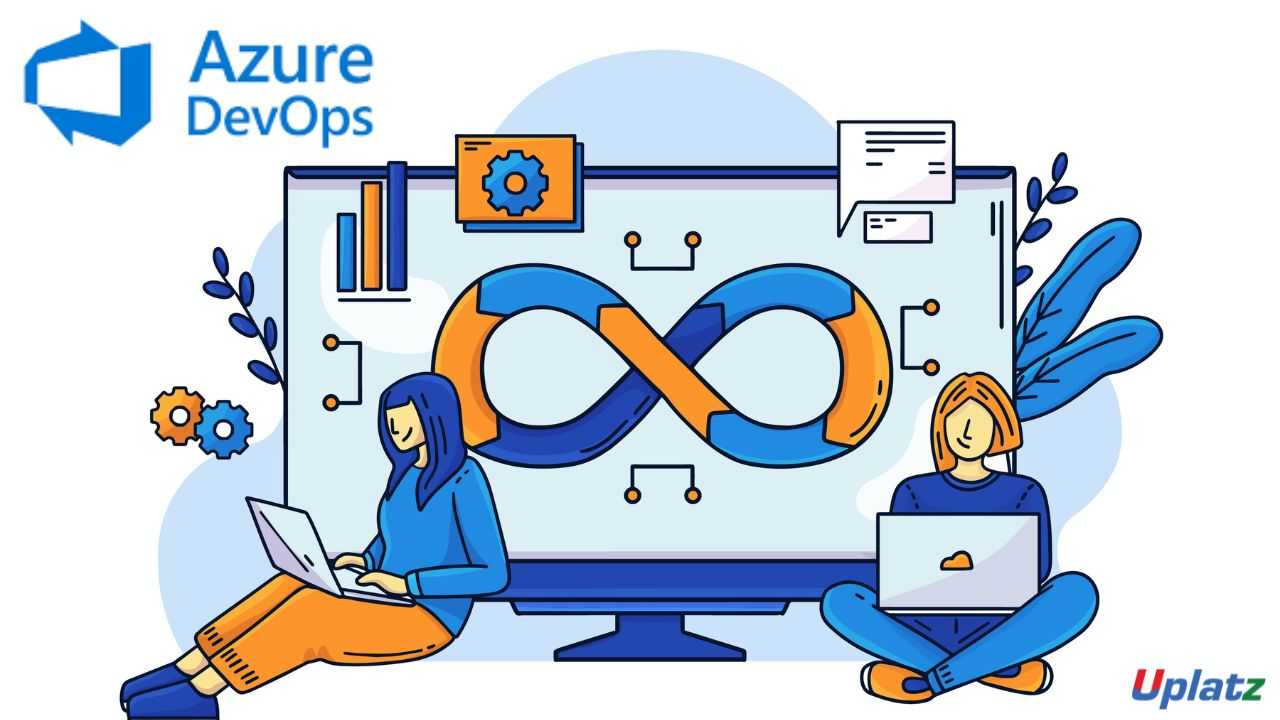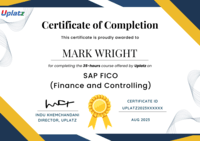Sentinel
Master Azure Sentinel from scratch and learn to build dynamic, data-driven security operations, threat detection, and incident response solutions.
Course Duration: 10 Hours
Preview Sentinel course
Price Match Guarantee Full Lifetime Access Access on any Device Technical Support Secure Checkout Course Completion Certificate 92% Started a new career
BUY THIS COURSE (
92% Started a new career
BUY THIS COURSE (GBP 12 GBP 29 )-
 86% Got a pay increase and promotion
86% Got a pay increase and promotion
New & Hot
Cutting-edge
Great Value
Coming soon (2026)
Students also bought -
-

- Career Path - Cloud Engineer
- 300 Hours
- GBP 32
- 4412 Learners
-

- Amazon Web Services (AWS)
- 28 Hours
- GBP 12
- 820 Learners
-

- Azure DevOps
- 10 Hours
- GBP 12
- 10 Learners

Azure Sentinel – Build and Deploy Security Operations Solutions – Online Course
Azure Sentinel: Build and Deploy Security Operations Solutions is a comprehensive, self-paced online course crafted to transform aspiring security analysts, SOC engineers, and IT professionals into confident threat detection and incident response creators.
Whether you are just starting your cybersecurity journey or expanding your skillset to include robust Security Information and Event Management (SIEM) and Security Orchestration, Automation, and Response (SOAR) with Azure Sentinel, this course offers a solid foundation, practical experience, and step-by-step guidance for building and deploying dynamic, real-world security solutions.
At its core, Azure Sentinel is a scalable, cloud-native SIEM and SOAR solution from Microsoft. Unlike traditional on-premises SIEMs that require significant upfront investment and ongoing maintenance, Azure Sentinel provides a flexible, pay-as-you-go model, leveraging the power of cloud scalability, AI, and machine learning for intelligent threat detection. This makes it an ideal choice for those who want to learn advanced cybersecurity operations from the ground up without unnecessary complexity. This course leverages that advantage by starting with the basics and steadily progressing to more advanced concepts, all while keeping the learning experience engaging and project-driven.
Through an in-depth, hands-on approach, this course covers everything you need to become proficient in Azure Sentinel. You'll begin with the fundamentals—setting up your Azure Sentinel workspace, connecting data sources (e.g., Azure Activity, Office 365, firewalls), and exploring the basics of Kusto Query Language (KQL). As you progress, you'll build powerful analytics rules for threat detection, implement automated responses with Playbooks (Logic Apps), manage incidents, integrate with external threat intelligence feeds, and even customize dashboards for security visibility. By the end, you’ll learn how to prepare your Sentinel instance for real-world use by configuring advanced threat hunting, leveraging User and Entity Behavior Analytics (UEBA), and integrating it into existing security operations workflows.
What You Will Gain
By the end of the course, you will have built multiple real-world projects, such as:
- A comprehensive threat detection system monitoring Azure resources and user activities.
- An automated incident response playbook for common security alerts.
- A custom security dashboard providing real-time insights into your organization's security posture.
- These projects aren't just for practice—they serve as portfolio-ready applications that showcase your ability to build scalable and production-ready security operations solutions using Azure Sentinel.
But this course goes beyond managing security alerts—it helps you understand how real-world threat detection and response work. You'll learn how to:
- Ingest data from a wide variety of sources into Azure Sentinel, including cloud, on-premises, and third-party solutions.
- Use Kusto Query Language (KQL) to perform advanced analytics and threat hunting on vast datasets.
- Create and fine-tune detection rules to minimize false positives and identify critical threats.
- Automate incident response actions using Azure Logic Apps (Playbooks) and Azure Functions.
- Secure your Sentinel workspace through role-based access control (RBAC) and data retention policies.
- Optimize and debug your analytics rules and playbooks using Sentinel's built-in tools and logs.
- Structure your Azure Sentinel deployments for maintainability and scalability, including content management.
- Integrate Sentinel with other Microsoft security services and external security tools, ensuring a holistic security posture.
Whether your goal is to become a security analyst, a SOC engineer, a cybersecurity consultant, contribute to enterprise security operations, or simply understand how modern SIEM solutions protect organizations, this course is the gateway to achieving those ambitions.
Who This Course Is For
This course is perfect for:
- Security analysts who want to leverage cloud-native SIEM capabilities.
- Students and beginners in cybersecurity looking for a structured and approachable course.
- IT professionals and system administrators aiming to enhance their security monitoring skills.
- DevOps engineers who want to integrate security monitoring into their CI/CD pipelines.
- Anyone interested in understanding threat detection, incident response, and security automation in the cloud. Regardless of your starting point, the course is structured to take you from zero to deployment with clarity and confidence.
How to Use This Course Effectively
To maximize your learning and apply your skills effectively, follow these tips for using the course:
- Follow the Sequence The course is designed to build progressively on knowledge. Start from the first module and move forward in order. Each concept introduces new techniques while reinforcing previously learned skills. Skipping ahead may cause confusion later, especially in projects that require cumulative understanding.
- Build Alongside the Instructor Hands-on practice is essential. As you watch the video tutorials, build along in your own Azure Sentinel environment. Don’t just observe—connect the data sources, write the KQL queries, configure the analytics rules, and troubleshoot errors. This repetition will solidify your learning and build real-world problem-solving skills.
- Use the Projects as Practice and Portfolio Pieces Each project you build during the course has real-world value. Customize them, add your own features, and consider documenting them or even adapting them for specific use cases. These projects can become part of your portfolio when applying for jobs or freelance gigs in cybersecurity.
- Take Notes and Bookmark Key Concepts Keep a security operations journal. Write down important KQL queries, detection logic, playbook steps, and lessons learned. Bookmark the modules covering key concepts like threat hunting, incident management, or SOAR for quick reference.
- Utilize the Community and Support Resources If the course offers a discussion forum, Slack group, or Q&A section, use it! Ask questions when you're stuck and help others when you can. Participating in a community will deepen your understanding and expose you to diverse perspectives and solutions.
- Explore Connectors and Documentation Azure Sentinel has a rich ecosystem of data connectors and community content. The course introduces several of them, but you’re encouraged to explore their documentation further. Developing the habit of reading official docs will make you a more independent and resourceful security professional.
- Practice Incident Response Early and Often Simulating an incident and practicing the response workflow, even a small one, teaches you how to triage, investigate, and mitigate threats. Don’t wait until the end of the course—try responding to a simulated alert after your first analytics rule. The experience is invaluable.
- Review and Revisit Cybersecurity is a skill built through repetition and iteration. Don’t be afraid to revisit previous lessons or rebuild a detection rule from scratch. Each time you do, you’ll catch something new or improve your understanding.
Why Learn Azure Sentinel?
Azure Sentinel is a critical tool for modern security operations, offering cloud-native scalability, advanced threat intelligence, and powerful automation capabilities. It's widely adopted by organizations for its ability to aggregate security data from diverse sources, detect sophisticated threats using AI/ML, and automate incident response, significantly reducing manual effort and improving reaction times. Learning Azure Sentinel gives you essential skills for protecting cloud and hybrid environments, managing security incidents, and contributing to a robust security posture.
This course not only teaches you Azure Sentinel—it empowers you to build real security solutions, implement them like a pro, and understand the entire threat detection and response process from data ingestion to automated remediation. It’s practical, engaging, and career-oriented. Whether you're learning Azure Sentinel for a job, a personal project, or to enhance your organization's security, this course provides the foundation and confidence to succeed. Start today, and begin building the skills to create, launch, and manage your own security operations with Azure Sentinel.
Course/Topic 1 - Coming Soon
-
The videos for this course are being recorded freshly and should be available in a few days. Please contact info@uplatz.com to know the exact date of the release of this course.
Course Objectives Back to Top
By the end of this course, you will be able to:
- Understand the fundamental architecture and components of Azure Sentinel.
- Connect various data sources to Azure Sentinel, including Azure services, M365, and external logs.
- Write effective Kusto Query Language (KQL) queries for data exploration and threat hunting.
- Create, manage, and fine-tune analytics rules for proactive threat detection.
- Develop and deploy automated response playbooks using Azure Logic Apps.
- Manage security incidents within Azure Sentinel, including investigation and triage.
- Leverage threat intelligence feeds to enhance detection capabilities.
- Understand and apply User and Entity Behavior Analytics (UEBA).
- Customize workbooks and dashboards for enhanced security visibility.
- Implement security best practices for Azure Sentinel deployment and operation.
Course Syllabus Back to Top
Azure Sentinel Course Syllabus
Module 1: Getting Started with Azure Sentinel
- Introduction to SIEM and SOAR
- Overview of Azure Sentinel Capabilities
- Setting Up Your Azure Sentinel Workspace
- Understanding Costs and Pricing Model
Module 2: Data Connectors and Ingestion
- Connecting Azure Activity Logs
- Connecting Office 365 Logs
- Connecting Azure AD Identity Protection
- Connecting Common Security Logs (CEF, Syslog)
- Custom Log Collection via Log Analytics Agent
Module 3: Kusto Query Language (KQL) Fundamentals
- Introduction to KQL Syntax
- Basic Query Operators (project, where, summarize, join)
- Time-Series Analysis in KQL
- Building Complex Queries
Module 4: Analytics Rules for Threat Detection
- Understanding Rule Types (Scheduled, Microsoft Security, Fusion)
- Creating Custom Analytics Rules with KQL
- Entity Mapping and Incident Creation
- Rule Tuning and False Positive Management
Module 5: Incident Management and Investigation
- Understanding Incidents in Sentinel
- Incident Triage and Prioritization
- Using the Investigation Graph
- Annotations and Bookmarks
Module 6: Threat Hunting with KQL
- Introduction to Proactive Threat Hunting
- Building Advanced KQL Queries for Hunting
- Using Hunting Queries from Microsoft and Community
- Creating Hunting Bookmarks and Livestream
Module 7: Automation with Playbooks (Azure Logic Apps)
- Introduction to SOAR and Playbooks
- Creating Playbooks for Incident Response
- Common Playbook Scenarios (e.g., blocking IP, sending notifications)
- Integrating with Azure Functions for Custom Logic
Module 8: Workbooks and Visualizations
- Introduction to Azure Monitor Workbooks
- Building Custom Dashboards with KQL
- Visualizing Security Data
- Best Practices for Security Dashboards
Module 9: Threat Intelligence Integration
- Understanding Threat Intelligence Concepts
- Integrating External Threat Intelligence Feeds
- Using Threat Intelligence in Analytics Rules and Hunting
Module 10: User and Entity Behavior Analytics (UEBA)
- Introduction to UEBA in Sentinel
- Detecting Anomalous User and Entity Behaviors
- Leveraging UEBA for Insider Threat Detection
Module 11: Advanced Sentinel Features
- Watchlists for Contextual Data
- Parsers and Data Transformation (ASIM)
- Content Management and Version Control
Module 12: Security Best Practices and Governance
- Role-Based Access Control (RBAC) for Sentinel
- Data Retention Policies
- Monitoring Sentinel Health
- Compliance and Auditing with Sentinel
Modules 13: Project-Based Learning
- End-to-End SIEM Deployment for a Cloud Environment
- Automated Incident Response Playbook Development
- Custom Threat Hunting Queries and Playbook Integration
- Security Posture Dashboard for an Enterprise
- Simulating and Responding to a Cyberattack
Module 14: Azure Sentinel Interview Questions & Answers
- Top Interview Questions
- Best Practices and Explanations
Certification Back to Top
Upon successful completion of the course, learners will receive an industry-recognized Certificate of Completion from Uplatz that validates their skills in Azure Sentinel and cloud security operations. This certification serves as a powerful addition to a resume or LinkedIn profile, demonstrating a candidate’s proficiency in threat detection, incident response, and security automation. It helps professionals stand out in job interviews and increases credibility when applying for roles such as Security Analyst, SOC Engineer, Cybersecurity Consultant, or Cloud Security Engineer. The certificate reflects both theoretical understanding and practical experience gained through hands-on projects, making learners job-ready.
Career & Jobs Back to Top
Azure Sentinel skills are in high demand in the cybersecurity and cloud operations industries, especially among organizations migrating to the cloud and adopting cloud-native security strategies. Completing this course prepares learners for roles such as:
- Security Analyst
- SOC Engineer
- Cybersecurity Engineer
- Cloud Security Specialist
Incident Responder Professionals with Azure Sentinel skills can pursue job opportunities at cloud service providers, managed security service providers (MSSPs), large enterprises, and organizations of all sizes that require robust security monitoring and incident response capabilities.
Interview Questions Back to Top
1. What is Azure Sentinel and what is its primary purpose?
Azure Sentinel is a cloud-native Security Information and Event Management (SIEM) and Security Orchestration, Automation, and Response (SOAR) solution from Microsoft. Its primary purpose is to collect security data from various sources, detect threats using AI/ML, investigate incidents, and automate responses to enhance an organization's security posture.
Azure Sentinel is a cloud-native Security Information and Event Management (SIEM) and Security Orchestration, Automation, and Response (SOAR) solution from Microsoft. Its primary purpose is to collect security data from various sources, detect threats using AI/ML, investigate incidents, and automate responses to enhance an organization's security posture.
2. Name some common data sources you can connect to Azure Sentinel.
Common data sources include Azure Activity Logs, Azure AD, Office 365, Microsoft 365 Defender, Azure Firewall, Windows Security Events, Syslog, Common Event Format (CEF) from firewalls/proxies, and threat intelligence feeds.
Common data sources include Azure Activity Logs, Azure AD, Office 365, Microsoft 365 Defender, Azure Firewall, Windows Security Events, Syslog, Common Event Format (CEF) from firewalls/proxies, and threat intelligence feeds.
3. What is Kusto Query Language (KQL) and why is it important in Azure Sentinel?
KQL is the query language used in Azure Sentinel (and Azure Log Analytics) to search, analyze, and visualize data. It's crucial for writing analytics rules, performing threat hunting, and investigating incidents effectively.
KQL is the query language used in Azure Sentinel (and Azure Log Analytics) to search, analyze, and visualize data. It's crucial for writing analytics rules, performing threat hunting, and investigating incidents effectively.
4. Explain the difference between Analytics Rules and Hunting Queries in Sentinel. Analytics Rules are designed for proactive, scheduled threat detection, generating incidents when conditions are met. Hunting Queries are used for proactive, exploratory searches to uncover new or unknown threats that might not be caught by existing rules.
5. What are Playbooks in Azure Sentinel, and what technology are they based on? Playbooks are automated, predefined workflows that can be triggered by Sentinel incidents or alerts to perform security operations tasks. They are based on Azure Logic Apps.
6. How do you manage security incidents in Azure Sentinel?
Incidents are managed through the "Incidents" blade, where analysts can triage, assign, investigate using the investigation graph, add comments, and change the status of incidents.
Incidents are managed through the "Incidents" blade, where analysts can triage, assign, investigate using the investigation graph, add comments, and change the status of incidents.
7. What is the role of User and Entity Behavior Analytics (UEBA) in Azure Sentinel? UEBA in Azure Sentinel leverages machine learning to analyze the behavior of users and entities (hosts, applications) over time, identifying anomalies and potential insider threats or compromised accounts that traditional rule-based detections might miss.
8. How can you integrate threat intelligence into Azure Sentinel?
Threat intelligence can be integrated using built-in data connectors (e.g., TAXII feeds, Microsoft's threat intelligence) or by importing custom threat intelligence feeds into the workspace. This data can then be used in analytics rules and hunting queries.
Threat intelligence can be integrated using built-in data connectors (e.g., TAXII feeds, Microsoft's threat intelligence) or by importing custom threat intelligence feeds into the workspace. This data can then be used in analytics rules and hunting queries.
9. What are Workbooks in Azure Sentinel?
Workbooks are flexible canvases in Azure Sentinel that allow you to create custom, interactive visual reports and dashboards using KQL queries to gain insights into your security posture and data.
Workbooks are flexible canvases in Azure Sentinel that allow you to create custom, interactive visual reports and dashboards using KQL queries to gain insights into your security posture and data.
10. Describe a scenario where you would use an Automation Rule in Azure Sentinel.
An automation rule can be used to automatically assign incidents to a specific security team member, change an incident's status (e.g., to "closed" if it's a known false positive), or trigger a playbook based on specific alert properties (e.g., if an alert comes from a certain IP address or user).
An automation rule can be used to automatically assign incidents to a specific security team member, change an incident's status (e.g., to "closed" if it's a known false positive), or trigger a playbook based on specific alert properties (e.g., if an alert comes from a certain IP address or user).
Course Quiz Back to Top
FAQs
Back to Top
Q1. What are the payment options?
A1. We have multiple payment options:
1) Book your course on our webiste by clicking on Buy this course button on top right of this course page
2) Pay via Invoice using any credit or debit card
3) Pay to our UK or India bank account
4) If your HR or employer is making the payment, then we can send them an invoice to pay.
Q2. Will I get certificate?
A2. Yes, you will receive course completion certificate from Uplatz confirming that you have completed this course with Uplatz. Once you complete your learning please submit this for to request for your certificate https://training.uplatz.com/certificate-request.php
Q3. How long is the course access?
A3. All our video courses comes with lifetime access. Once you purchase a video course with Uplatz you have lifetime access to the course i.e. forever. You can access your course any time via our website and/or mobile app and learn at your own convenience.
Q4. Are the videos downloadable?
A4. Video courses cannot be downloaded, but you have lifetime access to any video course you purchase on our website. You will be able to play the videos on our our website and mobile app.
Q5. Do you take exam? Do I need to pass exam? How to book exam?
A5. We do not take exam as part of the our training programs whether it is video course or live online class. These courses are professional courses and are offered to upskill and move on in the career ladder. However if there is an associated exam to the subject you are learning with us then you need to contact the relevant examination authority for booking your exam.
Q6. Can I get study material with the course?
A6. The study material might or might not be available for this course. Please note that though we strive to provide you the best materials but we cannot guarantee the exact study material that is mentioned anywhere within the lecture videos. Please submit study material request using the form https://training.uplatz.com/study-material-request.php
Q7. What is your refund policy?
A7. Please refer to our Refund policy mentioned on our website, here is the link to Uplatz refund policy https://training.uplatz.com/refund-and-cancellation-policy.php
Q8. Do you provide any discounts?
A8. We run promotions and discounts from time to time, we suggest you to register on our website so you can receive our emails related to promotions and offers.
Q9. What are overview courses?
A9. Overview courses are 1-2 hours short to help you decide if you want to go for the full course on that particular subject. Uplatz overview courses are either free or minimally charged such as GBP 1 / USD 2 / EUR 2 / INR 100
Q10. What are individual courses?
A10. Individual courses are simply our video courses available on Uplatz website and app across more than 300 technologies. Each course varies in duration from 5 hours uptop 150 hours.
Check all our courses here https://training.uplatz.com/online-it-courses.php?search=individual
Q11. What are bundle courses?
A11. Bundle courses offered by Uplatz are combo of 2 or more video courses. We have Bundle up the similar technologies together in Bundles so offer you better value in pricing and give you an enhaced learning experience.
Check all Bundle courses here https://training.uplatz.com/online-it-courses.php?search=bundle
Q12. What are Career Path programs?
A12. Career Path programs are our comprehensive learning package of video course. These are combined in a way by keeping in mind the career you would like to aim after doing career path program. Career path programs ranges from 100 hours to 600 hours and covers wide variety of courses for you to become an expert on those technologies.
Check all Career Path Programs here https://training.uplatz.com/online-it-courses.php?career_path_courses=done
Q13. What are Learning Path programs?
A13. Learning Path programs are dedicated courses designed by SAP professionals to start and enhance their career in an SAP domain. It covers from basic to advance level of all courses across each business function. These programs are available across SAP finance, SAP Logistics, SAP HR, SAP succcessfactors, SAP Technical, SAP Sales, SAP S/4HANA and many more
Check all Learning path here https://training.uplatz.com/online-it-courses.php?learning_path_courses=done
Q14. What are Premium Career tracks?
A14. Premium Career tracks are programs consisting of video courses that lead to skills required by C-suite executives such as CEO, CTO, CFO, and so on. These programs will help you gain knowledge and acumen to become a senior management executive.
Q15. How unlimited subscription works?
A15. Uplatz offers 2 types of unlimited subscription, Monthly and Yearly.
Our monthly subscription give you unlimited access to our more than 300 video courses with 6000 hours of learning content. The plan renews each month. Minimum committment is for 1 year, you can cancel anytime after 1 year of enrolment.
Our yearly subscription gives you unlimited access to our more than 300 video courses with 6000 hours of learning content. The plan renews every year. Minimum committment is for 1 year, you can cancel the plan anytime after 1 year.
Check our monthly and yearly subscription here https://training.uplatz.com/online-it-courses.php?search=subscription
Q16. Do you provide software access with video course?
A16. Software access can be purchased seperately at an additional cost. The cost varies from course to course but is generally in between GBP 20 to GBP 40 per month.
Q17. Does your course guarantee a job?
A17. Our course is designed to provide you with a solid foundation in the subject and equip you with valuable skills. While the course is a significant step toward your career goals, its important to note that the job market can vary, and some positions might require additional certifications or experience.
Remember that the job landscape is constantly evolving. We encourage you to continue learning and stay updated on industry trends even after completing the course. Many successful professionals combine formal education with ongoing self-improvement to excel in their careers. We are here to support you in your journey!
Q18. Do you provide placement services?
A18. While our course is designed to provide you with a comprehensive understanding of the subject, we currently do not offer placement services as part of the course package. Our main focus is on delivering high-quality education and equipping you with essential skills in this field.
However, we understand that finding job opportunities is a crucial aspect of your career journey. We recommend exploring various avenues to enhance your job search:
a) Career Counseling: Seek guidance from career counselors who can provide personalized advice and help you tailor your job search strategy.
b) Networking: Attend industry events, workshops, and conferences to build connections with professionals in your field. Networking can often lead to job referrals and valuable insights.
c) Online Professional Network: Leverage platforms like LinkedIn, a reputable online professional network, to explore job opportunities that resonate with your skills and interests.
d) Online Job Platforms: Investigate prominent online job platforms in your region and submit applications for suitable positions considering both your prior experience and the newly acquired knowledge. e.g in UK the major job platforms are Reed, Indeed, CV library, Total Jobs, Linkedin.
While we may not offer placement services, we are here to support you in other ways. If you have any questions about the industry, job search strategies, or interview preparation, please dont hesitate to reach out. Remember that taking an active role in your job search process can lead to valuable experiences and opportunities.
Q19. How do I enrol in Uplatz video courses?
A19. To enroll, click on "Buy This Course," You will see this option at the top of the page.
a) Choose your payment method.
b) Stripe for any Credit or debit card from anywhere in the world.
c) PayPal for payments via PayPal account.
d) Choose PayUmoney if you are based in India.
e) Start learning: After payment, your course will be added to your profile in the student dashboard under "Video Courses".
Q20. How do I access my course after payment?
A20. Once you have made the payment on our website, you can access your course by clicking on the "My Courses" option in the main menu or by navigating to your profile, then the student dashboard, and finally selecting "Video Courses".
Q21. Can I get help from a tutor if I have doubts while learning from a video course?
A21. Tutor support is not available for our video course. If you believe you require assistance from a tutor, we recommend considering our live class option. Please contact our team for the most up-to-date availability. The pricing for live classes typically begins at USD 999 and may vary.









